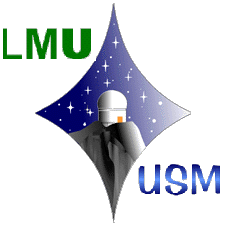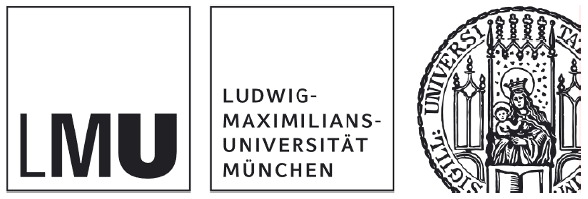Prof. Dr. Thomas Preibisch
Universitäts-
Sternwarte
München


|
Prof. Dr. Thomas Preibisch |
Universitäts- |
 |

|
Update from 18 June 2020: Registration for the final exam is now closed. All students registered for the exam will receive more detailed information about the exam procedures by e-mail within the next week.
Although the lecture will be in an online format, we will stick to the original
schedule and treat one chapter each week, starting in the first week of the
teaching period (starting on 20 April 2020).
The online lecture and tutorials materials will
consist of the following elements:
a) This lecture website is the central point for organizational information. It will be continuously updated. All announcements and information about any changes will be described in this blue top block of the page.
b) The lecture material website
contains the PDFs of the lecture slides and the tutorial problem sets
for each week.
The login information for this page will be sent to
the campus e-mail addresses of all
registered students on the first day of the teaching period, i.e. 20 April.
c) I will produce screencast videos of each lecture, in which
I will discuss the lecture slides in a way similar as would be done
in the lecture hall. Each lecture is split into 3 videos.
These screencast videos will be posted
at the LMUCast website.
The links required to watch the videos for each week will be posted on the
lecture material website.
Registered students can then use their LMU campus account
to get access to the screencasts.
I recommend that each week you watch the video for the corresponding week.
d) I plan to schedule a ZOOM video-conference each week
on Wednesday at 13:00.
The link to the conference and the required password
will be posted on the
lecture material website or sent to the registered students by e-mail.
In these video-conferences, students can (if they want to) ask questions
about the lecture. Participation in these video-conferences is, of course,
entirely voluntary.
I will try to be available as regularly as possible, but
I cannot guarantee this right now for the whole time of the
semester.
e) The tutorials will also be held as a video-conference each Wednesday at 16:30, starting
on 29 April.
The problem sets for each week are available
on the lecture materials website.
In the week after the issue date of a problem set,
the solutions to these problems will be discussed with the tutor, Tadziu Hoffmann.
The link to the conference and the required password
will be posted on the
lecture material website.
Participation in the tutorial video-conferences is strongly recommended
Vorlesung (2 SWS):
Zeit: Mittwoch, 12:15 bis 13:45 Uhr
Raum: ONLINE-Vorlesung
Start: 22. April 2020
Tutorium (Übungen) (2 SWS):
Zeit: Mittwoch: 16:30 bis 18:00 Uhr
Raum: Videokonferenz
Start: Das erste Tutorium findet in der 2. Vorlesungswoche (also am 29.4.) statt.
Diese Vorlesung gibt zunächst einen Überblick über die Physik und Chemie des Interstellaren Mediums, behandelt dann die Struktur, Stabilität und den Kollaps von Molekülwolken, sowie die Entstehung und Vorhauptreihenentwicklung von Sternen und die Entwicklung der zirkumstellaren Materie um junge Sterne. Neben der Beschreibung der grundlegenden Mechanismen der Planetenentstehung liegt ein weiterer Schwerpunkt der Vorlesung auf der frühen Entwicklung von terrestrischen Planeten, insbesondere ihrer Atmosphären und dem Klima, sowie dem Konzept der Habitabilität von Planeten. Im letzten Teil der Vorlesung werden schließlich noch Sternentstehung in Sternhaufen sowie Feedbackprozesse durch massereiche Sterne behandelt.
Wahlpflichtvorlesung (P4/5.0.19) im Studiengang Master Astrophysik oder
Master Physik mit Schwerpunkt Astrophysik;
kann auch von Studenten im Studiengang Master Physik
und Diplomstudenten gehört werden.
Sprache: Englisch oder Deutsch, je nach Bedarf.
Masterstudenten können mit dieser Vorlesung und der zugehörigen Ergänzung (Übungen) durch Bestehen der Abschlussprüfung (Klausur) 6 ECTS Punkte erwerben.
Lecture (2 SWS):
Time: Wednesday, 12:15 - 13:45
Room: Online-Lecture
Start: 22 April 2020
Tutorials (2 SWS):
Time: Wednesday, 16:30 - 18:00
Room: Videoconference
Start: 29 April (second week of the teaching period)
This lecture will first give an overview on the physics and chemistry of the
interstellar medium and the formation and
early evolution of stars and stellar systems.
It will also discuss the early evolution of terrestrial planets, their
atmospheres and climate, and the concept of habitability of planets.
This lecture is
suitable for all master students in physics or astrophysics.
Topics: